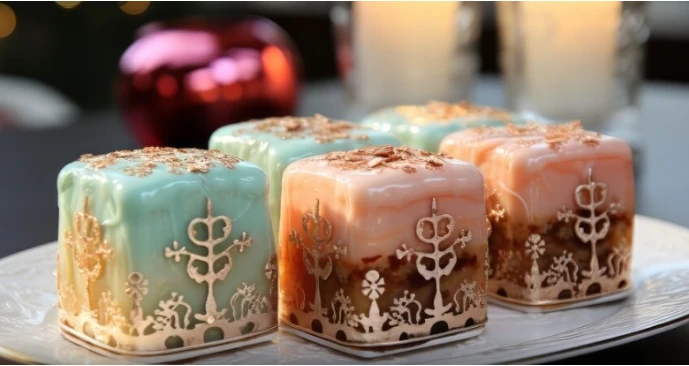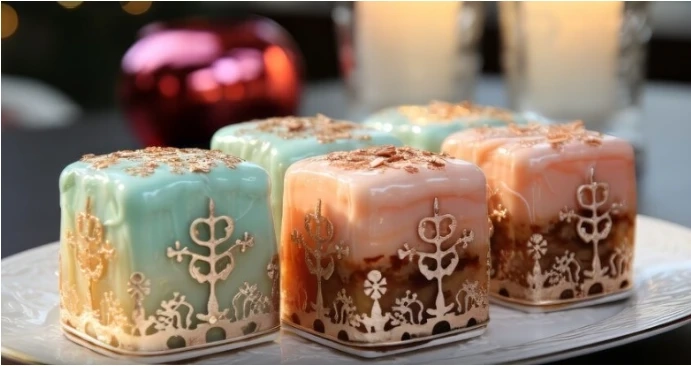
Candle making is an age-old craft that blends artistry with functionality. From ancient civilizations using candles for light to today’s decorative and aromatic creations, candles have evolved into more than just a light source—they are now an essential part of home décor, celebrations, and relaxation rituals. At the heart of this process lies one key tool: moulds for making candles. These moulds are essential for shaping candles into a wide variety of styles, from simple pillars to intricate figurines.
A mould determines the size, shape, and detailing of a candle, making it a fundamental choice for both beginner and professional candle makers. Selecting the right mould not only affects the final look of the candle but also the ease of production and durability of the mould itself. This is why understanding the types, materials, and maintenance of candle moulds is vital.
In this detailed guide, we will explore the different types of candle moulds, the materials they are made from, tips for choosing the right one, and practical advice for using and maintaining them. By the end, you will have a comprehensive understanding of how to make the best choice for your candle-making projects.
Types of Candle Moulds
Silicone Moulds
Silicone moulds are highly popular among modern candle makers due to their flexibility and ease of use. They allow you to create intricate designs with minimal effort because they can be peeled away from the hardened wax without damaging the candle. Silicone moulds are also heat-resistant, easy to clean, and long-lasting. However, they can be more expensive compared to other types.
Metal Moulds
Metal moulds, typically made from aluminum or tin, are favored for their durability and ability to produce smooth, professional-looking candles. They are especially ideal for pillar candles, as the rigidity of the metal helps the wax hold its shape while cooling. However, removing the candle from a metal mould may require the use of a release agent.
Polycarbonate Moulds
These transparent moulds allow candle makers to monitor the wax as it cools, ensuring better control over the process. Polycarbonate moulds for making candles are strong, reusable, and available in various shapes, but they are not as flexible as silicone and may require a mould release spray for easy demoulding.
Factors to Consider When Choosing Moulds for Making Candles
Material Quality and Durability
The first consideration should always be the quality of the material. Higher-quality moulds will last longer, produce cleaner results, and withstand repeated use without warping or cracking.
Shape and Size
Your choice of shape depends on the style of candle you want to create—be it a tall pillar, a short votive, or an ornate sculpture. Size also matters because it determines how much wax is needed and how long the candle will burn.
Heat Resistance
Since candle making involves pouring hot wax into moulds, heat resistance is crucial. Silicone and metal moulds generally perform well in this regard, while some plastics may deform under high temperatures.
Compatibility with Wax Type
Different waxes have different shrinkage rates and cooling behaviors. Ensure the moulds for making candles you select are compatible with the type of wax you plan to use to avoid defects or difficulties during demoulding.
Using Moulds for Making Candles Effectively
Preparing the Mould
Before pouring wax, it is essential to prepare the mould properly. This may involve applying a mould release agent to prevent sticking, especially for metal and polycarbonate moulds. In silicone moulds, this step is often unnecessary due to their non-stick nature.
Pouring the Wax
Melt your wax according to the manufacturer’s instructions, add fragrance or color if desired, and carefully pour it into the prepared mould. Pour slowly to avoid creating air bubbles, which can affect the candle’s appearance.
Cooling and Demoulding
Allow the candle to cool completely before attempting to remove it from the mould. Rushing this step can cause the candle to warp or crack. Silicone moulds make demoulding easier, while
metal and polycarbonate moulds may require gentle tapping or warming to release the candle.
Maintenance and Care of Candle Moulds
Cleaning After Use
Proper cleaning extends the life of your moulds. Silicone moulds can usually be washed with warm soapy water, while metal moulds may need special care to avoid rusting. Polycarbonate moulds should be cleaned gently to prevent scratching.
Storage Tips
Store moulds in a cool, dry place to prevent damage. Avoid stacking heavy objects on top of them, especially silicone moulds, which can lose their shape if compressed.
Regular Inspection
Check your moulds for cracks, warping, or other signs of wear before each use. Damaged moulds can lead to poor-quality candles or even safety hazards.
Creative Possibilities with Moulds for Making Candles
Unique Shapes and Themes
With the variety of moulds available, candle makers can experiment with seasonal designs, floral patterns, geometric shapes, and even custom logos. This opens up opportunities for creating signature products or themed collections.
Layered and Embedded Candles
Some moulds for making candles are designed to make layered candles, where different colors of wax are poured in stages to create visually appealing patterns. Others allow for embedding small decorative items within the candle for added charm.
Combining Different Moulds
Mixing and matching moulds can lead to truly unique creations. For instance, a simple cylindrical mould can be paired with a decorative top mould to produce a candle that stands out in design and texture.
Common Mistakes to Avoid When Using Candle Moulds
Not Preparing the Mould Properly
Skipping mould preparation can lead to sticking and damage to both the mould and the candle.
Pouring Wax Too Hot or Too Cold
Incorrect wax temperature can cause shrinkage, cracks, or uneven surfaces in your candle.
Overfilling the Mould
Overfilling can cause wax to spill over, making cleanup difficult and creating uneven candle bases.
Conclusion: Perfecting the Art with Moulds for Making
Candles
Candle making is both a creative art and a precise craft, and selecting the right mould plays a significant role in the outcome. By understanding the different types of moulds, the materials they are made from, and the best practices for using them, you can consistently produce candles that are beautiful, functional, and long-lasting. Whether you are a beginner experimenting with your first project or an experienced candle maker looking to expand your product line, investing in quality moulds for making candles will enhance both your process and results. With proper care and creative experimentation, these moulds can help you bring your candle-making visions to life with precision and style.
Frequently Asked Questions
1. What are the most common materials used for moulds for making candles?
The most common materials include silicone, metal (such as aluminum or tin), and polycarbonate.
2. How do I prevent candles from sticking to the mould?
Using a mould release spray or a light coating of vegetable oil can prevent sticking, especially for metal and polycarbonate moulds.
3. Can I use the same mould for different types of wax?
Yes, but it’s important to ensure the mould is compatible with the specific wax type. For example, soy wax can sometimes shrink more than paraffin, so you may need to adjust cooling times or use release agents for certain moulds.
4. How should I clean my candle moulds after use?
Silicone moulds can usually be washed with warm soapy water, while metal moulds should be wiped clean and dried thoroughly to prevent rust.



